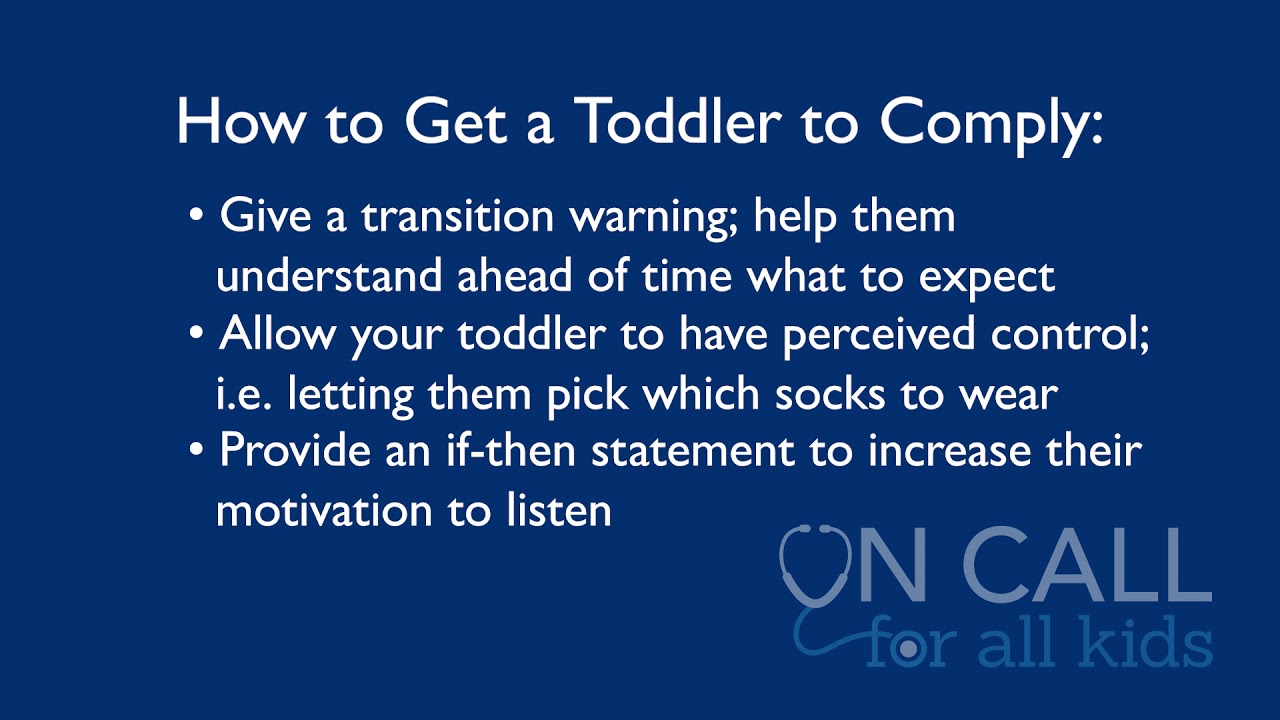Do you ever wonder how to get your toddler to listen? The key is to build a strong, loving relationship. When your child feels connected to you, they are more likely to cooperate. This article will explore various positive parenting tips for toddlers and effective toddler discipline techniques that will foster toddler cooperation strategies, guide toddler behavior management and help you navigate handling toddler tantrums and setting boundaries for toddlers. Ultimately we’ll delve into building a strong parent-child relationship with age-appropriate expectations for toddlers.

Image Source: www.hopkinsmedicine.org
Building a Foundation: Connection Before Correction
Before delving into specific strategies, it’s vital to understand that a secure attachment is the bedrock of toddler cooperation. A toddler who feels loved, safe, and understood is far more likely to listen than one who feels insecure or neglected.
Nurturing Attachment
- Spend Quality Time: Even 15-20 minutes of focused, uninterrupted playtime each day can significantly impact your toddler’s sense of connection. Put away your phone, get down on their level, and engage in their world. Let them lead the play, whether it’s building a tower, playing with dolls, or reading a book.
- Physical Affection: Hugs, cuddles, and kisses are powerful ways to communicate love and security. Incorporate physical affection into your daily routine.
- Active Listening: When your toddler talks to you, truly listen. Make eye contact, nod, and respond thoughtfully. Show them that their thoughts and feelings matter.
The Power of Play
Play is a toddler’s primary language. Use play to connect, teach, and redirect behavior. Make chores fun by turning them into games, sing songs while tidying up or involve a favorite stuffed animal in the cleaning process.
Effective Communication with Toddlers
Toddlers are still developing their language skills and may not always be able to express themselves clearly. Clear and simple communication is important.
Speak Their Language
- Keep it Simple: Use short, clear sentences. Instead of saying, “Please put your toys away so we can have dinner, and then we can read a book before bedtime,” try, “Toys away. Then eat. Then book.”
- Get Their Attention: Before giving instructions, make sure you have your toddler’s attention. Get down to their level, make eye contact, and say their name.
- Use Positive Language: Instead of saying, “Don’t run,” try “Walk, please.” Focus on what you want them to do rather than what you don’t want them to do.
Expressing Expectations Clearly
- Visual Aids: Toddlers often respond well to visual aids. Use pictures or symbols to illustrate routines and expectations. For example, a picture of a toothbrush can remind them to brush their teeth.
- Consistent Language: Use the same words and phrases to communicate expectations. This helps toddlers learn and internalize the rules.
- Offer Choices (When Possible): Giving toddlers choices empowers them and increases cooperation. For example, instead of saying, “Put on your shoes,” try, “Do you want to wear your blue shoes or your red shoes?”
Age-Appropriate Expectations for Toddlers
One of the biggest reasons for frustration and miscommunication is having unrealistic expectations. Remembering what is developmentally normal can help you respond in a more patient and effective way.
Temperament Considerations
Every child is unique. Recognize your toddler’s individual temperament. Some toddlers are naturally more easygoing, while others are more sensitive or strong-willed. Adjust your parenting approach accordingly.
Developmental Milestones
- Cognitive Development: Toddlers are beginning to understand cause and effect but still struggle with impulse control.
- Emotional Development: Toddlers experience big emotions but haven’t yet developed the skills to regulate them effectively.
- Social Development: Toddlers are learning to interact with others and may struggle with sharing and taking turns.
What To Expect From Your Toddler
| Skill | Age (Approximate) | Expectations |
|---|---|---|
| Following Instructions | 2-3 years | Can follow simple, one-step instructions. May need reminders. |
| Sharing | 3-4 years | Beginning to understand the concept of sharing, but may still struggle. Requires adult guidance. |
| Emotional Regulation | 2-4 years | Experiences big emotions (tantrums are common). Needs help from adults to calm down and manage feelings. |
| Independence | 2-4 years | Wants to do things on their own (dressing, eating). May need help but resists assistance at times. |
| Language | 2-4 years | Vocabulary expanding rapidly. Can communicate basic needs and wants. May struggle with complex sentences. |
Toddler Discipline Techniques: Positive Approaches
Instead of relying on punishment, focus on teaching your toddler appropriate behavior through positive discipline techniques.
Redirection and Distraction
- Redirect Unwanted Behavior: If your toddler is engaging in a behavior you don’t want (e.g., hitting), gently redirect them to a more appropriate activity. “Hitting hurts. Let’s hit this pillow instead.”
- Distract with Something Engaging: If your toddler is getting restless or upset, try distracting them with a favorite toy, a song, or a change of scenery.
Positive Reinforcement
- Catch Them Being Good: Focus on praising and acknowledging positive behaviors. “I love how you’re sharing your toys with your brother!”
- Use Specific Praise: Be specific with your praise so your toddler knows exactly what they did well. “You did a great job cleaning up your toys and putting them in the bin!”
- Rewards: Use rewards sparingly and strategically. Focus on small, immediate rewards (e.g., a sticker, extra playtime) rather than large, material rewards.
Time-In vs. Time-Out
- Time-In: Instead of sending your toddler away for a time-out, try a time-in. Sit with them, offer comfort, and help them calm down. Once they are calm, talk about what happened and how they can handle the situation differently next time.
- Time-Out (Use Sparingly): If time-in isn’t effective, a brief time-out (1 minute per year of age) in a designated quiet spot can help your toddler calm down and reflect on their behavior.
Setting Boundaries for Toddlers
Boundaries are essential for a toddler’s sense of security. Clearly communicate the rules.
Consistent Rules
- Establish Clear Rules: Set clear, simple rules that your toddler can understand. “We don’t hit,” “We use gentle hands,” “We share our toys.”
- Be Consistent: Enforce the rules consistently. Inconsistency can confuse toddlers and make them less likely to listen.
- Explain the Reasons: Explain the reasons behind the rules. “We don’t hit because it hurts.” “We share our toys so everyone can have fun.”
Natural and Logical Consequences
- Natural Consequences: Allow natural consequences to occur whenever it is safe to do so. If your toddler throws their toy, it might break.
- Logical Consequences: Implement logical consequences that are related to the behavior. If your toddler refuses to clean up their toys, they may not be able to play with them for a while.
Handling Toddler Tantrums: A Calm Approach
Tantrums are a normal part of toddler development. It is not a sign of bad parenting. The key is to stay calm and help your toddler navigate their big emotions.
Strategies for Calming Tantrums
- Stay Calm: The most important thing is to stay calm yourself. Your toddler will mirror your emotions.
- Provide Comfort: Offer comfort and reassurance. Let your toddler know that you are there for them, even when they are upset.
- Ignore the Behavior (When Safe): If the tantrum is not dangerous, and your toddler is in a safe environment, it may be best to ignore the behavior. Give them space to calm down on their own.
- Help Them Label Their Feelings: Help your toddler identify and label their feelings. “I see that you are angry because you can’t have the toy.”
- Teach Coping Skills: Once your toddler is calm, teach them coping skills for managing their emotions, such as deep breathing, counting to ten, or squeezing a stress ball.
Preventing Tantrums
- Identify Triggers: Pay attention to the situations that tend to trigger tantrums and try to avoid them when possible.
- Provide Structure and Routine: Toddlers thrive on structure and routine. A predictable schedule can help reduce anxiety and prevent tantrums.
- Offer Choices (Within Limits): Giving toddlers choices can empower them and reduce frustration.
- Ensure Adequate Rest and Nutrition: Tiredness and hunger can make toddlers more prone to tantrums. Make sure they are getting enough sleep and eating nutritious meals.
Nurturing A Strong Parent-Child Relationship
Ultimately, getting your toddler to listen isn’t about control, it’s about connection. It’s about fostering a strong, loving relationship built on trust, respect, and mutual understanding.
Building Trust and Respect
- Keep Your Promises: If you promise something, follow through. This builds trust and shows your toddler that you are reliable.
- Respect Their Feelings: Acknowledge and validate their feelings, even if you don’t agree with their behavior.
- Apologize When Necessary: If you make a mistake, apologize to your toddler. This teaches them humility and shows them that you value their feelings.
Practicing Self-Care
- Take Care of Yourself: Parenting is demanding. Make sure you are taking care of your own physical and emotional needs.
- Seek Support: Don’t be afraid to ask for help from your partner, family, friends, or a therapist.
- Be Patient: Remember that toddlerhood is a challenging but temporary stage. Be patient with yourself and your toddler.
Frequently Asked Questions (FAQ)
- What if my toddler never listens, no matter what I do? First, ensure your expectations are age-appropriate. It can also be helpful to seek guidance from a pediatrician or child development specialist to rule out any underlying issues. Focus on building a strong connection and using consistent, positive discipline techniques.
- How do I deal with tantrums in public? Stay calm. Move your toddler to a quieter space if possible. Ignore the behavior and focus on comforting your child. Avoid giving in to their demands, as this can reinforce the behavior.
- Should I use time-outs? Time-outs can be effective, but they should be used sparingly and as part of a broader positive discipline approach. Focus on teaching your toddler appropriate behavior rather than simply punishing them. Time-ins are often more effective for building connection and helping toddlers regulate their emotions.
- What if my toddler hits or bites? Address the behavior immediately. Say firmly, “No hitting (or biting). Hitting (or biting) hurts.” Redirect them to a more appropriate activity. Teach them alternative ways to express their feelings. Be consistent with your response.
- How do I handle power struggles? Offer choices whenever possible. Avoid getting into a battle of wills. Focus on finding win-win solutions. When necessary, set firm boundaries and enforce them consistently.
By focusing on building a strong parent-child relationship, communicating effectively, setting age-appropriate expectations, and using positive discipline techniques, you can foster toddler cooperation and create a more harmonious home environment. Remember that patience, consistency, and a loving approach are key to success.

Clark Lubowitz is a parenting expert with over 10 years of experience in toddler care and child development. Holding a degree in Early Childhood Education, he specializes in blending modern technology with parenting, offering expert advice on the best toddler gadgets. Through his work on ToddlerAwesome.com, Clark provides valuable insights to help parents make informed decisions for their little ones.
